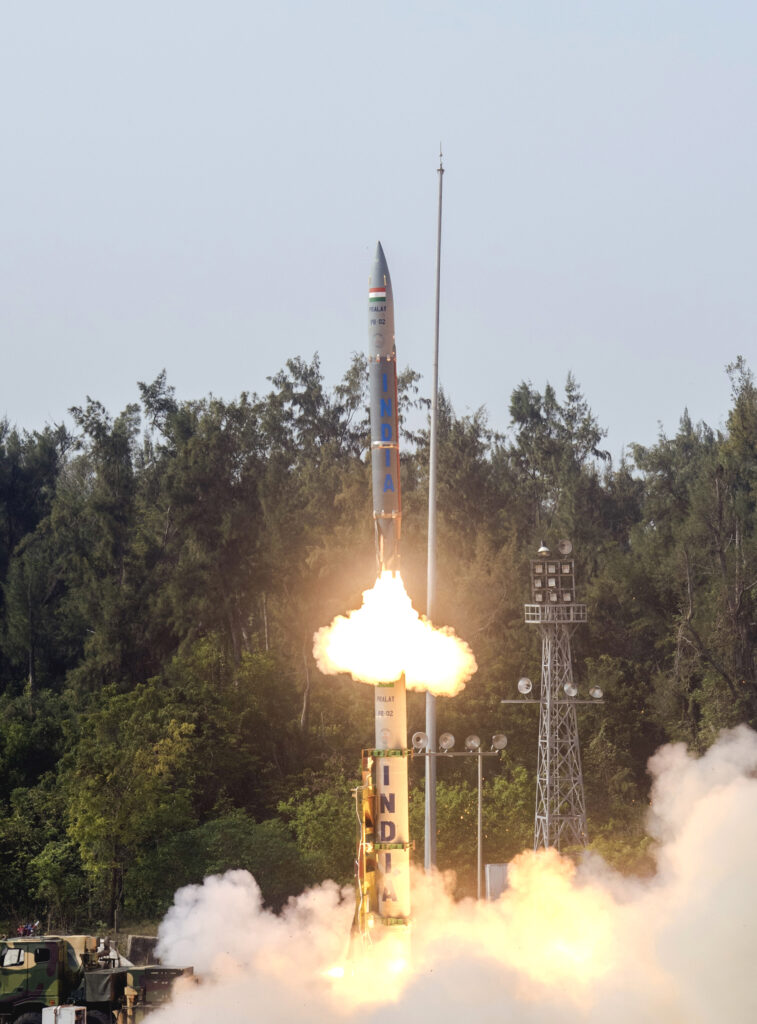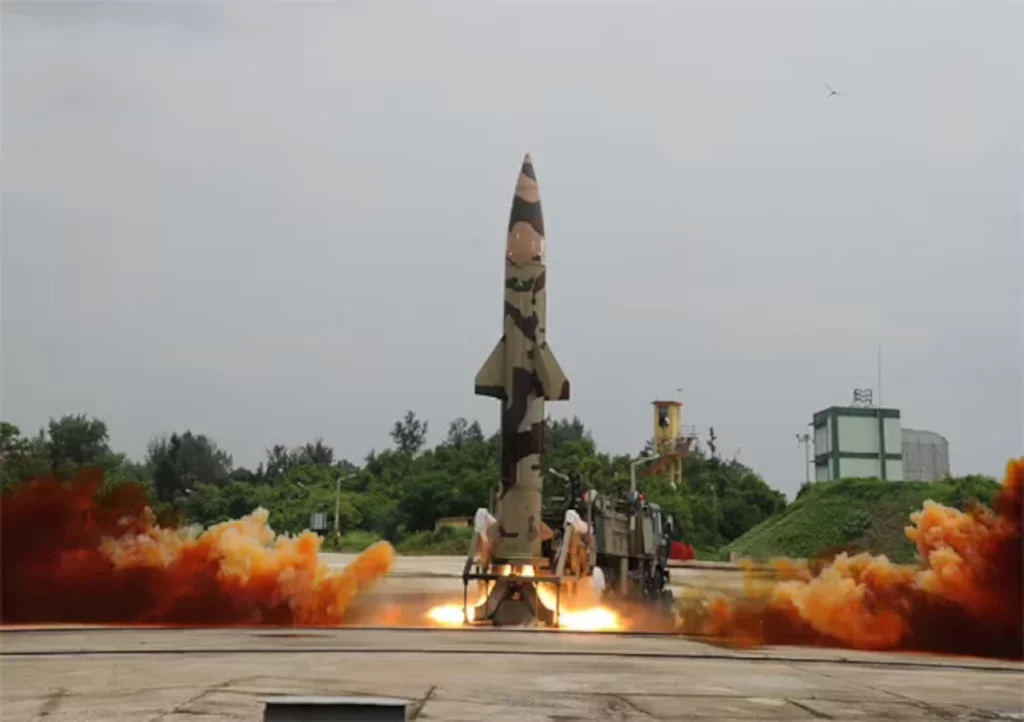The Indian Defense Ministry intends to acquire approximately 120 Pralay Missiles for deployment along the contested borders with China and Pakistan.
The Indian Ministry of Defense (MoD) said the ballistic missiles are capable of striking targets up to 500 kilometres away. To be inducted into the Indian Army, it is reported that it is very difficult to intercept the missile with traditional air defence systems. India’s enemies, China and Pakistan, have already deployed such ballistic missiles.
What is known about the Pralay missile?
In December 2021, India conducted a successful test of the surface-to-surface guided short-range ballistic missile Pralay off the coast of Odisha in Balasore. The missile was launched from APJ Abdul Kalam Island and carried out its intended mission. Multiple instruments tracked the missile’s journey along the shore, and its most vital components were observed as it flew. India has numerous types of missiles with very long ranges. The new missile is a unique asset.
The Defense Research and Development Organization (DRDO) is in charge of the development of Pralay. The new missile follows a desired Quasi Ballistic Trajectory, which is a low, curved route an object travels when thrown or shot. Additionally, it is capable of direction and range changes. During previous tests, it accurately hit its target, confirming that the control guidance and mission algorithms functioned.
The Pralay is a canisterized missile, meaning that it may be transported in a sturdy metal container designed to store chemicals or gases.
Tactical missiles are shorter-range, close-combat weapons compared to intermediate-range and intercontinental missiles. Typically, the range of a tactical ballistic missile is less than 500 kilometres. The majority of tactical ballistic missiles are transportable, allowing them to survive and be deployed rapidly. Additionally, they can carry a variety of warheads to destroy their targets.

The Hindi term Pralay means “to be entirely demolished” or “to do a significant deal of damage”.
For comparable ranges, the Indian Armed Forces also employ the Indo-Russian Brahmos cruise missile. Brahmos is expensive and can only handle around 200 kilogrammes. Pralay missile is expected to cost only one-third of the Brahmos missile, which costs about USD 2.6 million (Rs 22 crores). Therefore, the Indian Army sensed the need for a missile with a range of more than 150 kilometres and a larger payload capacity. The range of the Pralay missile is between 150 and 500 kilometres, depending on the size of the payload. The circular Error Probability (CEP) of the Pralay Missile is 10 metres. The missile is capable of carrying between 350 and 700 kg of a High Explosive Preformed Fragmentation Warhead, Runaway Denial Penetration Submunition (RDPS) or Penetration Cum Blast (PCB).
The Pralay missile is comparable to the Chinese Dongfeng 12, the Russian 9k 720 Iskander missile, and the Precision Strike Missile (PrSM) of the United States Army.
The United States, Russia, India, China, and Israel are developing missile defence systems capable of intercepting Pralay-class missiles. It is comparable to attempting to stop one bullet with another. The enemy missile is constantly monitored, and its trajectory is transmitted to the combat station. The battle station then launches interceptor missiles to eliminate the impending threats. Since ballistic missiles typically follow a predetermined parabolic course, the trajectory can be calculated in advance.
The Pralay is a nearly ballistic surface-to-surface missile. The sophisticated missile was designed to be difficult for interceptors to stop. After a given distance, the Pralay can alter its flight course to defeat the anti-missile systems.
Pralay carries Multiple warheads (MIRVs), including false warheads, to confuse enemy anti-missile defences. During the Gulf War, the US Army Patriot anti-missile systems were far less successful against the older Iraqi scuds as the gunners were unsure of what to shoot when Scud missile components dropped beside the missile’s warhead.
Replace Prithvi Missile

The Pralay missile is intended to replace the older Prithvi Missile in the arsenal of the Indian military. The Prithvi missile is a liquid-fueled rocket that is extremely difficult to handle and must be refuelled prior to launch. Liquid fuels are extremely corrosive, which means they ruin metal storage containers. If liquid fuel is held in a missile for an extended period of time, the missile will corrode or may even leak. Pralay is solid fuel and boasts the most modern electronics. In the 1990s, Prithvi was one of the first missiles added to India’s arsenal. Unlike Prithvi missiles, Pralay can be stored in a combat-ready state for an extended period of time and can be fired quickly. Prithvi Missiles is scheduled to be withdrawn in a phased manner.
The Prithvi missiles have been modernised and have now reached the end of their service life.
